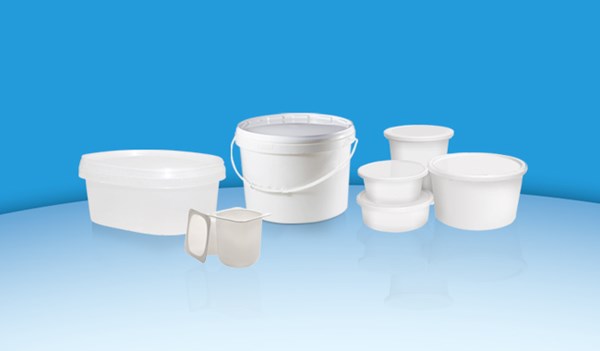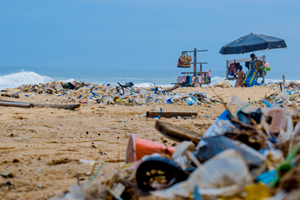The Verdict Is In: Brand Owners Want Recycled PP
The Association of Postconsumer Recyclers surveyed 21 consumer brand companies regarding the potential for PCR PP.
The Association of Postconsumer Recyclers surveyed 21 consumer brand companies regarding the potential for PCR PP.
Recycled PP could become a hot commodity. That’s according to a recent survey from the Association of Postconsumer Recyclers, which stated that demand for recycled polypropylene (PP) by major consumer brand companies is approaching 300 million pounds annually. The 21 major consumer brand companies who responded also provided quality and quantity information for potential PP PCR use in non-food contact applications. These companies alone identified demand of more than 280 million pounds of the recycled resin annually.
The study was an effort to identify market demand for PCR PP in the current market climate. “We recognize the combination of factors impacting the current market for recyclables, however consumer brand companies specifically outlined potential demand for this material. The challenge remains providing recyclers the feedstock to meet that demand,” commented Liz Bedard, APR’s Rigid Plastics Recycling Program Director.
All respondents’ demand is current or within the next three years. The survey also provides information on qualitative PCR components such as melt flow index, odor, color and demand timeframe.
“APR’s two main goals are to increase supply and enhance the quality of the plastics recycling stream,” said J. Scott Saunders, general manager of KW Plastics and chairman of APR. “Through work to achieve those goals, The APR Rigids Plastics Recycling Program and the Polypropylene Market Development Subcommittee have become one of the primary drivers to move the marketplace forward through stimulating growth and increasing availability and use of polypropylene PCR.”
Applications for polypropylene PCR include tubes, rigid packaging, closures, containers, pails, crates, disposable cutlery, pallets, hangers and tubs. Full survey results are available on the APR website.
Julie Zaniewski, packaging sustainability manager at Unilever, participated in the survey and provided her company’s perspective. “Unilever recognizes that recycling is one of the most effective ways to sustain the environment. As part of the Unilever Sustainable Living Plan, we are committed to increasing recycling rates and improving the availability of postconsumer materials, such as polypropylene. Recycled polypropylene is an important material with massive opportunity in a circular economy. Working in partnership with industry, we aim to increase the recycling of polypropylene and increase the recycled material content in our packaging to maximum possible levels, catalyzing the industry and further reducing our impact on the environment.”
The topic of PP PCR has come up quite a bit in some of the various conferences I’ve attended this year (The Recycling Conference, ReFocus).
For instance, during The Recycling Conference, Steve Sikra, materials science and technology manager at Procter & Gamble, said brand owners do indeed want to use recycled PP. Currently, P&G uses about 550,000 tons of virgin PP /yr, but looks to incorporate more recycled PP. By 2020, the company plans to double the use of post-consumer recycled content in plastic packaging.
“Let’s face it, pricing is always a challenge for us, but so is doing the right thing,” he said. “P&G has publically stated these goals and we are going to do that. The drive to use PCR is very real, and specifically in PP, there are a lot of potential applications.”
And while this study focused on potential PP PCR use in non-food contact applications, the food contact applications is also of interest to brands. For instance, I talked extensively with Monique Oxender, Keurig’s chief sustainability officer, regarding the company’s shift to PP. She mentioned the following:
“In terms of recyclability, we also considered what really drives recovery. And we found it’s the value of the material. There has to be a healthy economic equation across the value chain in order for the material to be recovered. When we looked at the outlook for PP, we saw it is very strong, and there are folks that want that material. The demand for post-consumer reclaim PP is on the rise. In fact, demand seems to be outstripping supply.”
Ed. Note: Additive suppliers are taking note as well, witness this product introduction.

Related Content
Honda Now Exploring UBQ’s Biobased Material Made from Unsorted Household Waste
UBQ is aiming to expand its reach for more sustainable automotive parts as well as non-automotive applications.
Read MoreFungi Makes Meal of Polypropylene
University of Sydney researchers identify two strains of fungi that can biodegrade hard to recycle plastics like PP.
Read MoreCompatibilizers Aid Recycling & Upcycling of Mixed Resins
Compatibilizers are proving their worth in boosting critical properties such as impact/stiffness balance of PCR and PIR blends of polyolefins and other plastics.
Read MoreThermoforming PCR: An Equipment Supplier’s Pointers
Thermoforming PCR is not radically different from forming virgin, but variation in recycled materials can require extra care to get a consistent end result. Start by examining every aspect of the process from the sheet (and extrusion process if run inline) to the final trim.
Read MoreRead Next
Troubleshooting Screw and Barrel Wear in Extrusion
Extruder screws and barrels will wear over time. If you are seeing a reduction in specific rate and higher discharge temperatures, wear is the likely culprit.
Read MoreUnderstanding Melting in Single-Screw Extruders
You can better visualize the melting process by “flipping” the observation point so that the barrel appears to be turning clockwise around a stationary screw.
Read MoreAdvanced Recycling: Beyond Pyrolysis
Consumer-product brand owners increasingly see advanced chemical recycling as a necessary complement to mechanical recycling if they are to meet ambitious goals for a circular economy in the next decade. Dozens of technology providers are developing new technologies to overcome the limitations of existing pyrolysis methods and to commercialize various alternative approaches to chemical recycling of plastics.
Read More.png;maxWidth=970;quality=90)


























